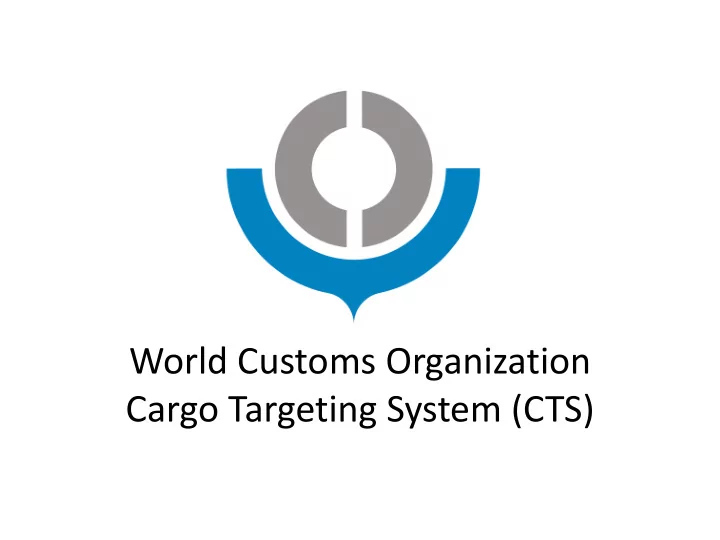

World Customs Organization Cargo Targeting System (CTS)
Introduction to CTS • CTS is an IT application developed by and owned by WCO. • The development of CTS was unanimously supported by and is available to all 179 WCO member Customs administrations. • CTS will enable effective risk assessment and targeting of high risk import, export and transshipment cargo across the full range of Customs assigned matters. • CTS currently focuses on containerised cargo but is expanding to other transport modes starting with air cargo in 2014.
Project Components CTS development has 3 main components: • Application Development. • Data. • Deployment.
CTS Application • CTS is standardised and is the same in every country where it is deployed. • CTS is deployed on hardware installed in each country. • Each country deployment is a unique instance of the CTS application. • CTS development is complete and the application has been successfully deployed so far to Customs in Jamaica and Bahamas
CTS Application • CTS will enable user Customs administrations to: – Gather manifest/bill of lading data. – Store gathered data in a database. – Perform automated and manual querying, risk assessment and targeting of manifest data. – Identify high-risk cargo in an efficient, effective and timely manner and facilitate low risk cargo. – Focus Customs resources on highest risks.
CTS Data • CTS has a standardised data model using UN EDIFACT CUSCAR (supplied in a separate document). • CTS covers imports, exports and transshipments. • WCO are collaborating with the global container shipping industry to ensure the right data flows at the right time to user Customs administrations using standard industry practice and wish to expand this effort. • Deployments to date are supported by major shipping lines calling at those countries. • Data is filed by shipping lines directly to user countries and is stored in user countries.
Data Guidelines • The CTS data guidelines are fully detailed is a separate document. • Data is required from Carriers & NVOCCs. • Inbound cargo (Imports/Transshipments) filed 72 hours prior to vessel arrival or on departure from last foreign port if less than 72 hours. • Outbound cargo (Exports) filed as soon a possible between 24 hours prior to departure to 24 hours after departure. • Data requirements will be backed by Customs regulation where necessary.
CTS Deployment • CTS already deployed in Jamaica and Bahamas. • Further funded deployments are underway across the World together with a number of preliminary negotiations. • Main CTS roll-out channel - UNODC/WCO Container Control Programme (detailed in the next slide).
Next Steps • Sri Lanka Customs/WCO to establish CTS points of contact with each agent and agree process to provide manifest/bill of lading data to CTS. • Agents to provide points of contact at the World HQ of shipping lines for WCO to discuss Sri Lanka and global CTS deployment plans together with standardised data requirements • WCO to provide CTS data model and participant guidelines and answer any questions • Sri Lanka Customs/WCO to receive and review data samples and resolve problems as necessary prior to CTS deployment in February 2014 • Shipping lines/agents to begin routine filing of manifests to CTS.
Thank you Robert.White@wcoomd.org
Recommend
More recommend